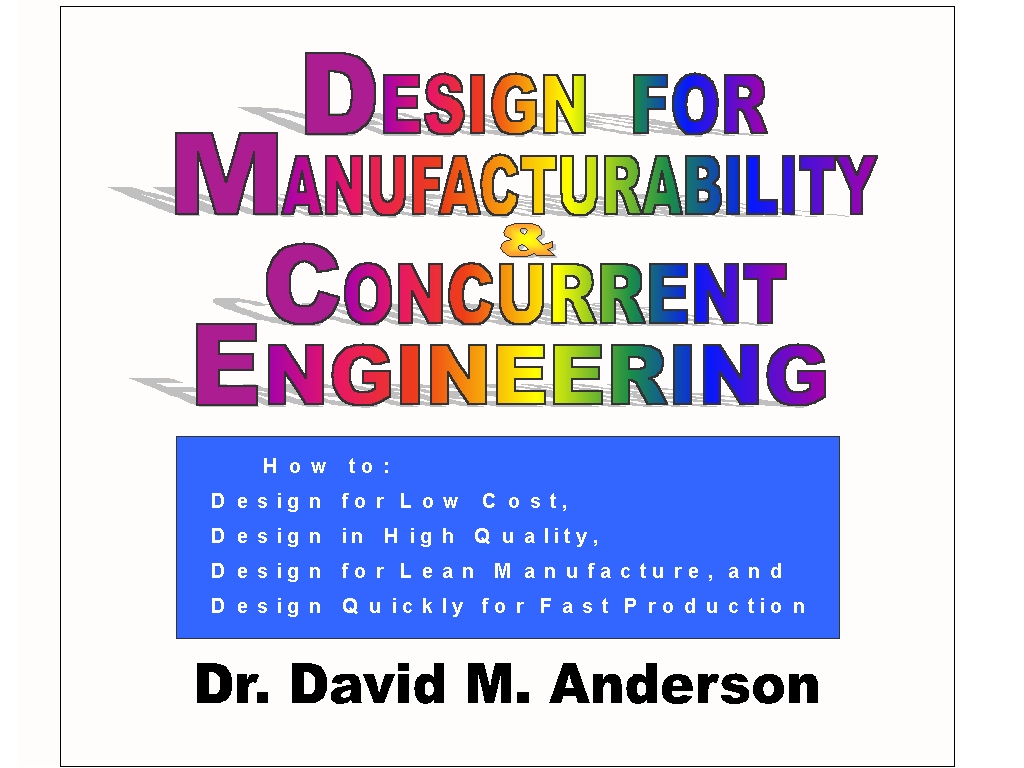by Dr. David M. Anderson, P.E., fASME, CMC
from the Book:
"Design For Manufacturability and Concurrent Engineering"
Copyright © 2010 by David M. Anderson
Design for manufacturability is the process of proactively designing products to (1) optimize all the manufacturing functions: fabrication, assembly, test, procurement, shipping, delivery, service, and repair, and (2) assure the best cost, quality, reliability, regulatory compliance, safety, time-to-market, and customer satisfaction.
Concurrent Engineering is the practice of concurrently developing products and their manufacturing processes.
If existing processes are to be utilized, then the product must be design for these processes.
If new processes are to be utilized, then the product and the process must be developed concurrently.
Design for Manufacturability and Concurrent Engineering are proven design methodologies that work for any size company. Early consideration of manufacturing issues shortens product development time, minimizes development cost, and ensures a smooth transition into production for quick time to market.
Quality can be designed in with optimal part selection and proper integration of parts, for minimum interaction problems. By considering the cumulative effect of part quality on product quality, designers are encouraged to carefully specify part quality.
Design for Manufacturability can reduce many costs, since products can be quickly assembled from fewer parts. Thus, products are easier to build and assemble, in less time, with better quality. Parts are designed for ease of fabrication and commonality with other designs. DFM encourages standardization of parts, maximum use of purchased parts, modular design, and standard design features. Designers will save time and money by not having to "re-invent the wheel." The result is a broader product line that is responsive to customer needs. Click here for article on standardization.
Read complete article here>>

No comments:
Post a Comment